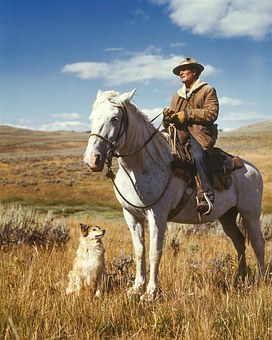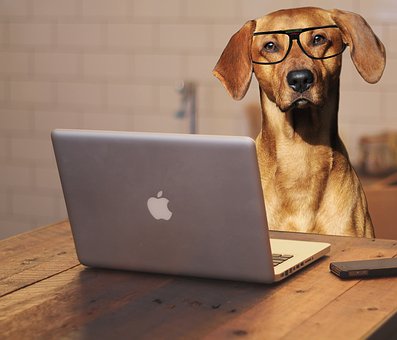Introduction
In addition to being our besties, dogs are so much more to us. Over the next posts, I’ll tell you what I’ve found out that dogs do – besides “just” loving us.
Many dogs really “earn their keep,” and here are some of the ways.
The American Kennel Club (AKC.org) uses the phrase “Working Dogs” to describe breeds which were originally bred for jobs other than herding or hunting (e.g., pulling carts, guarding and the like).
Working Dogs come in all shapes and sizes. Most Working Dogs are robust, intelligent and often headstrong; they are a diverse group, skilled in a number of masteries – livestock and property guardians, police dogs, sled dogs and rescue dogs.
“Quick to learn, dogs of the Working Group are intelligent, strong, watchful, and alert. Bred to assist man, they excel at jobs such as guarding property, pulling sleds and performing water rescues. Doberman Pinschers, Siberian Huskies and Great Danes are part of this Group, to name just a few. They make wonderful companions but because they are large, and naturally protective, prospective owners need to know how to properly train and socialize a dog. Some breeds in the Working Group may not be for the first-time dog owner.” (https://www.akc.org/dog-breeds/working)
Here are 30 dogs designated by the American Kennel Club as Working Group: https://www.akc.org/dog-breeds/working.
Dogs At Work

A working dog is a canine that is not merely a pet, but is one that has been taught certain tasks and performs them to either assist or entertain its human companions. A working dog is also a canine that has been bred or trained to work livestock.
A working dog is:
one that helps a rancher manage cattle;
a dog that performs stunts for a trainer who receives pay for that animal’s work;
a service dog or an assistance dog;
A lap dog or a companion dog is not a working dog.
Technically speaking, a “Show Dog” is not a “Working Dog.” (According to Wikipedia, “A show dog might refer to any dog entered into a dog show. More specifically, a show dog is a dog which has been specially bred, trained, and/or groomed to conform to the specifications of dog shows, so as to have a chance of winning.” Wikipedia.org.)
21st Century Working Dogs
Service Dogs (or assistance dogs) are ones that help people who are physically handicapped or visually or hearing impaired perform every day tasks.
Some Therapy Dogs live with people who are incapacitated and/or help them function in some way. Others visit and provide cheer and entertainment for the residents in retirement facilities, hospital patients who are ill and/or injured.
Rescue Dogs come to the aid and assistance of people in difficult situations; they help find people who are lost, save people in water, snow, or other kinds of disasters. Typical breeds seen in the field include Labrador Retrievers, Border Collies, German Shepherd Dogs and certain members of the Hound Group.
Guard Dogs
Guard Dogs, Police Dogs and Detection Dogs kind of work under a similar umbrella: Guard Dogs (aka Watch Dogs) help protect their “owner” as well as personal and public property. Some Guard Dogs are used for patrol (e.g., military and security companies). Remember that episode where Monk awakens to find himself alone in a Walmart-like store after hours – and then being chased by a Doberman Pincher?
Although one usually only sees German Shepherds, Doberman Pinschers, Belgian Malinoirs (they look (to me) just like German Shepherds), and Rottweilers being used as Guard Dogs, these are also very effective: Giant Schnauzer, Akita, Chow-Chow, Kuvasz, Chinese Shar-Pei, Komondor. If you ask me, just seeing a Chow-Chow or a Giant Schnauzer would be enough to get my “See ya. Gotta go!”
While it isn’t regularly used today, the Bullmastiff is a large size breed of domestic dog, with a solid build and a short muzzle, originally developed by 19th-century gamekeepers to guard estates.
Police Dogs
Police Dogs (aka K9 Units) are trained to track and immobilize possible criminals. They assist officers in making arrests or in investigating crime scenes. Some K9 Units are even specially trained for anti-terrorist units.
Again, we usually only see German Shepherds, Doberman Pinschers, Belgian Malinoirs, and Rottweilers being used as Guard Dogs, these are also very effective: Belgian Sheepdog, Boxers, Labrador Retrievers, among others.
Remember, Police Dogs work in public order enforcement, illicit substance detection, tracking and cadaver and/or survivor searches. Some departments use one dog to do all these things; others use different dogs for different jobs.
Detection Dogs
Detection Dogs (e.g., Collie, Indian Pariah Dog and German Short-Haired Pointer) can be seen (sometimes) sitting with their handlers in airports and other transport hubs, sniffing the passengers from afar to detect any illegal substances (drugs or explosives) a person may be carrying on their person or in luggage or carry-on items.
Happier Work

Did you know that Dogs are sometimes used in programs to assist children in learning how to read? Yes! The “Reading With Rover” program (http://www.readingwithrover.com) in the Puget Sound area of Washington State does exactly that.
From Working Dog to Pet
The breeding of dogs that work originated by selecting highly intelligent, hardy, alert mixed-breed dogs. Working Dogs resulted when dogs with similar desirable characteristics – loyalty and good temperament – were bred. As a result, many working breeds are sought after as family pets.
As long as potential owners realize that these dogs must be given “work” to do, Working Dogs make excellent pets. If they are not going to be used for their original purpose, they must be trained from a young age. Even so, they are best suited to active persons and families.
At the very least, these breeds must have daily walks – or other exercise at an appropriate level for the breed. Fur parents should provide toys, play with them, and be their human company. If not, why have a dog? In addition, obedience training and dog sports, as well as other activities, are all excellent channels for these breeds’ energy.
Caveat: Working dogs that are left alone or ignored become bored, vocal, and sometimes even neurotic. They may present sickness, lethargy, exhibit destructive behavior or even try to run away. For these reasons, Working Dogs inappropriately chosen as pets are often surrendered to shelters.
In the next couple of posts, let’s look at some other Working Dogs.
sk.

